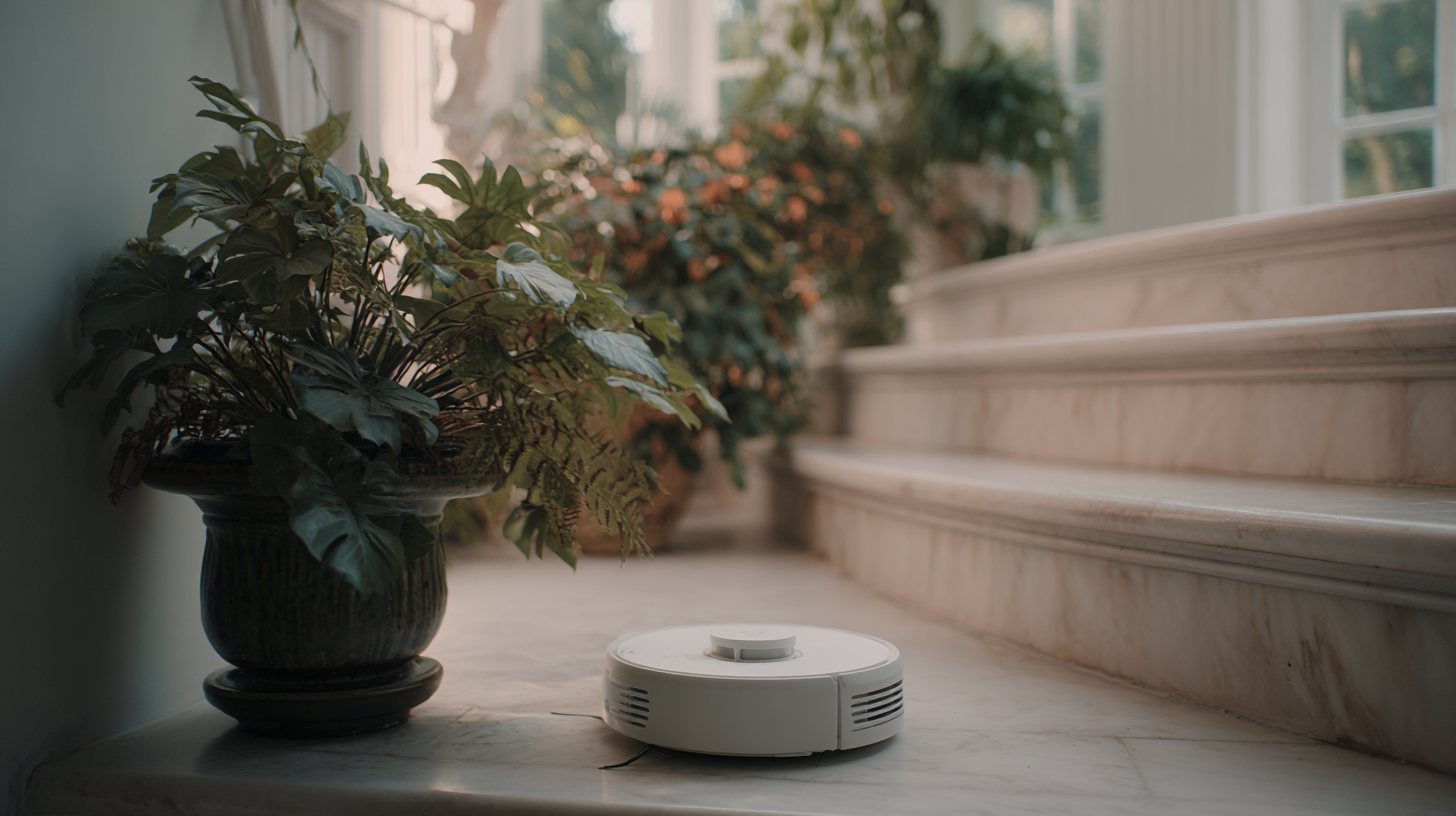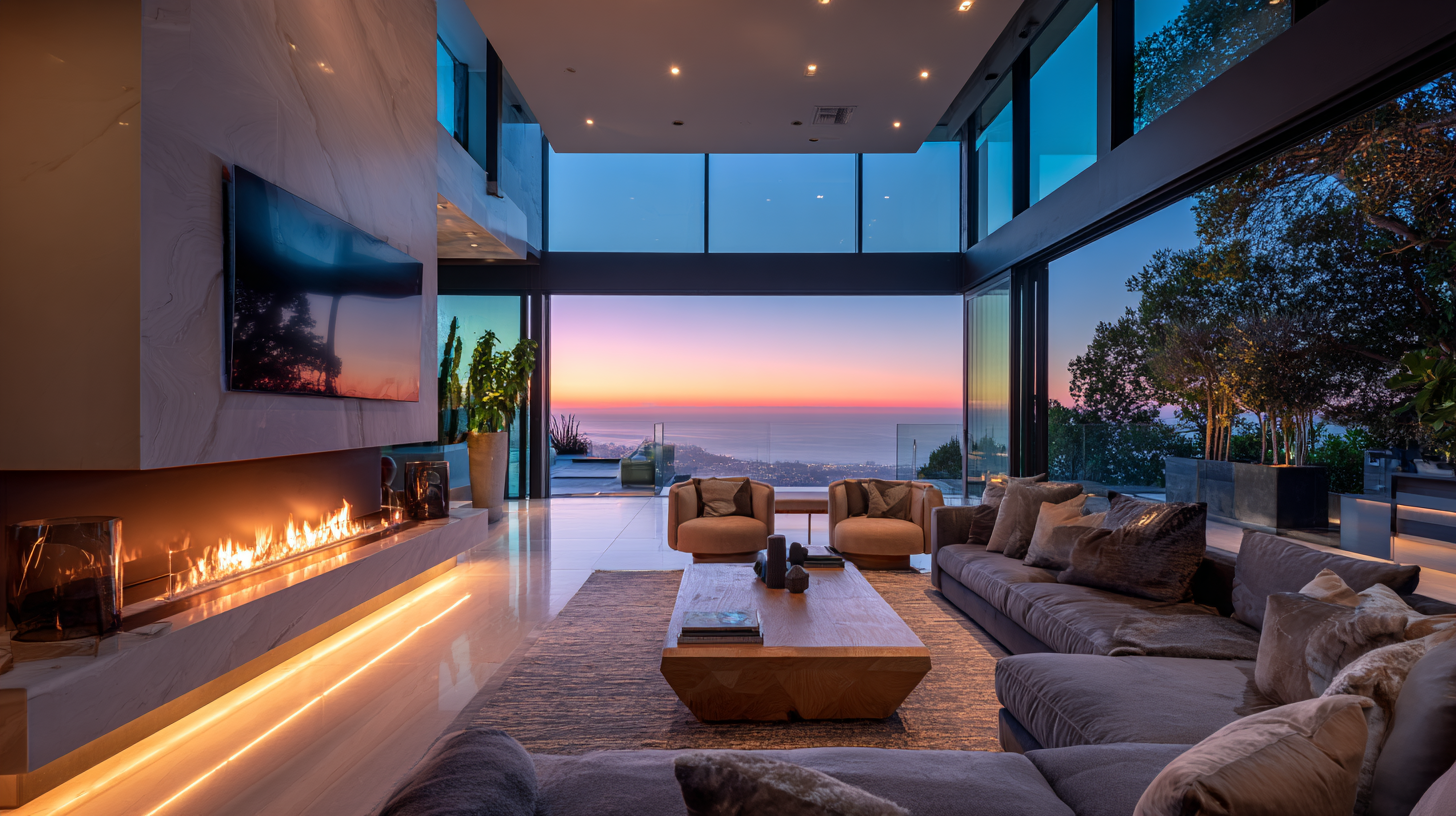
As the Smart Home market continues to thrive, projected to reach $174 billion by 2025 (Statista), the demand for innovative solutions tailored to diverse lifestyles is stronger than ever. These advanced technologies not only enhance convenience and security but also promote energy efficiency and sustainability. With the proliferation of smart devices—from automated lighting systems to intelligent climate control—homeowners are seeking solutions that seamlessly integrate into their daily routines. In this dynamic landscape, understanding the distinct features and applications of various smart home solutions becomes crucial. Additionally, industry standards and import/export certifications play a pivotal role in ensuring the safety and efficacy of these products, further influencing consumer choices. This blog will explore the best smart home solutions available today, catering to a variety of preferences and lifestyles, while highlighting the importance of compliance in the ever-evolving smart technology sector.

As modern lifestyles evolve, so do our expectations for convenience and efficiency in our homes. Smart home solutions have emerged to enhance daily living, offering distinct features that cater to a variety of needs. From voice-activated assistants to automated lighting systems, these technologies seamlessly integrate into our routines, allowing us to control our environments with a simple command. For instance, smart thermostats learn our temperature preferences, adjusting settings automatically to optimize comfort while saving energy.
Moreover, security is a priority for many, and smart home solutions provide innovative features such as real-time surveillance cameras, motion sensors, and remote access locking systems. Homeowners can monitor their properties from anywhere in the world, receiving alerts and enabling quick responses to potential threats. Additionally, the ability to integrate various devices into one cohesive system means that users can customize their setups to fit their individual lifestyles, whether they are busy professionals, families, or tech enthusiasts. This comprehensive approach ensures that the enhancement of daily life is not only functional but also tailored to the unique demands of modern living.
The rapid advancement of smart home technology has led to diverse home automation types, each tailored to unique lifestyle needs. According to a report by Statista, the global smart home market is projected to reach over $174 billion by 2025, indicating a robust demand for customized solutions that enhance convenience, security, and energy efficiency. For instance, security systems, such as smart cameras and doorbell detectors, provide real-time monitoring and alerts, catering to the growing concern for home safety. A survey by Parks Associates revealed that 30% of US households currently own a smart security device, showcasing their popularity and importance in modern living.
Meanwhile, energy management systems, like smart thermostats and lighting controls, appeal to environmentally-conscious consumers seeking to reduce their carbon footprint. Research from Navigant Consulting highlights that energy-efficient home automation can save users up to 30% on energy costs annually. These systems learn household patterns and adjust energy usage accordingly, making them ideal for tech-savvy homeowners who prioritize sustainable living. As the market continues to evolve, exploring these distinct automation types allows consumers to choose solutions that align with their specific lifestyle and values.
| Home Automation Type | Distinct Features | Typical Use Cases | Lifestyle Compatibility |
|---|---|---|---|
| Smart Lighting | Remote control, color changing, scheduling | Mood setting, energy savings, security | Eco-conscious, tech-savvy, busy professionals |
| Smart Security Systems | Video surveillance, motion detection, alerts | Home safety, package delivery monitoring | Families, frequent travelers, urban residents |
| Smart Thermostats | Learning capabilities, remote access, energy reports | Temperature control, cost savings | Eco-conscious, budget-minded, tech enthusiasts |
| Smart Voice Assistants | Voice control, integration with devices, information retrieval | Hands-free control, entertainment management | Families, elderly, busy individuals |
| Smart Appliances | Remote operation, energy monitoring | Cooking, laundry management, energy efficiency | Home chefs, busy families, tech-savvy individuals |
Smart home technologies are revolutionizing the way we interact with our living spaces, significantly enhancing both comfort and efficiency. According to a recent report by Statista, the global revenue in the smart home market is projected to exceed $130 billion by 2025, indicating a growing trend towards automation in households. By integrating devices like smart thermostats, lighting systems, and security cameras, homeowners can create a tailored environment that adapts to their lifestyle preferences while reducing energy consumption by up to 30%.
Tips: Consider installing a smart thermostat that learns your schedule and preferences. This not only optimizes energy use but also ensures a comfortable living environment, saving you money in the long run.
Moreover, smart home solutions can foster seamless communication between devices. For instance, utilizing voice-controlled assistants allows you to manage multiple appliances with simple commands, thereby streamlining daily routines. Research from McKinsey highlights that homes equipped with smart technologies can achieve a 15% boost in efficiency over traditional setups.
Tips: To improve connectivity, ensure your Wi-Fi network can handle the increased demand from multiple smart devices, and consider a mesh network for large homes to maintain strong signals throughout.

As households evolve, so do their needs for smart home solutions that cater to various family dynamics. According to a report by Statista, the smart home market is projected to reach $135.3 billion by 2025, indicating a growing demand for personalized experiences. Modern solutions offer customizable settings to accommodate the unique habits and requirements of each family member, from busy professionals to families with young children or elderly relatives.

For instance, families with young children may prioritize security features like smart cameras and sensor alarms to keep their little ones safe. Meanwhile, tech-savvy teens might appreciate smart entertainment systems integrated with voice assistants for seamless interaction with their devices. Additionally, multi-generational households can benefit from smart home technologies that aid in health monitoring, such as connected wearables that alert family members of any health concerns. Reports suggest that 60% of consumers aged 55 and older express interest in adopting smart health devices, illustrating a clear trend toward tech that enhances family safety and wellness.
Embracing the diverse applications of smart home technology allows each household to create a tailored living environment, fostering comfort and efficiency amidst their varying lifestyles.
As the landscape of smart home technology continues to evolve, so too do the applications of these devices in our daily lives. The integration of artificial intelligence and machine learning is paving the way for smart systems that not only respond to commands but also learn from user behaviors and preferences. For instance, smart thermostats that analyze your routines can optimize energy consumption, ensuring comfort while reducing costs. Additionally, advanced security systems equipped with facial recognition and real-time alerts provide homeowners with peace of mind like never before.
Looking ahead, the trend towards interconnected ecosystems is becoming more pronounced. Future smart home devices will communicate seamlessly with each other, creating a cohesive and intuitive living environment. Imagine a scenario where your refrigerator alerts you of dwindling supplies, while your smart oven preheats with a recipe suggestion based on what you have at home. This interconnectivity extends to health and wellness, where devices can monitor air quality and adjust settings to enhance your living space. As these technologies advance, they will increasingly become tailored to meet the unique needs of various lifestyles, making smart homes not just a convenience, but an essential aspect of modern living.
